Thousands of Suns
The nuclear tests of 1945-1962. On the materials of American archives
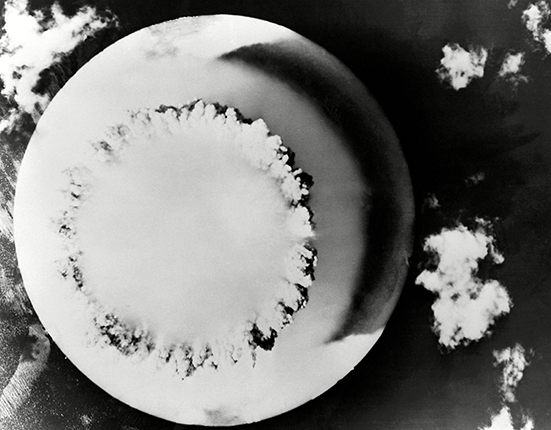
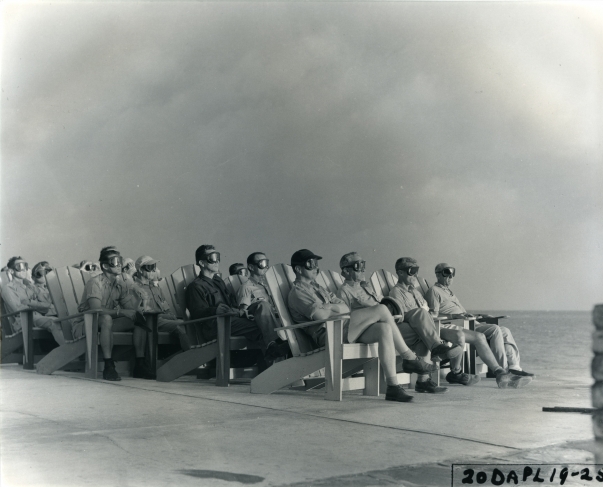
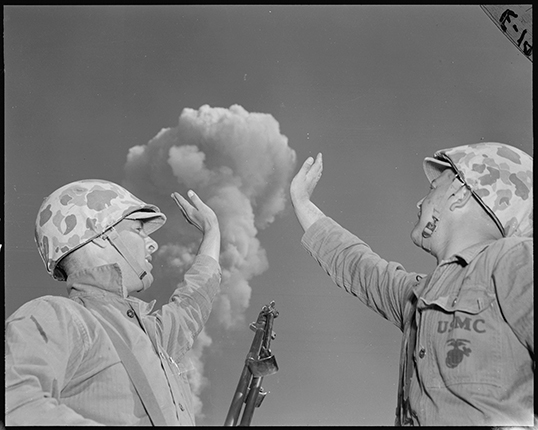
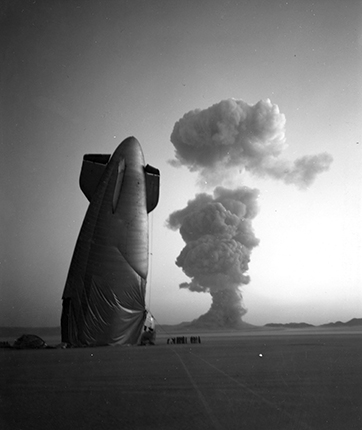
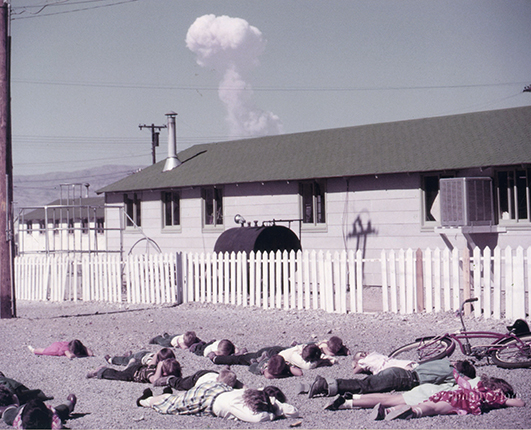
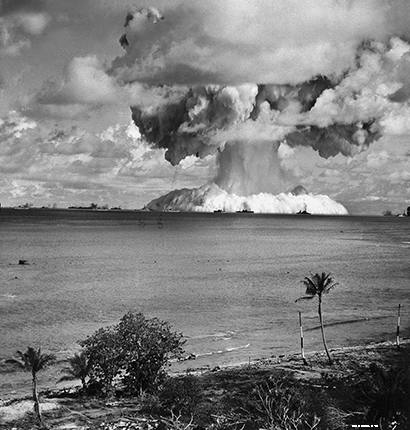
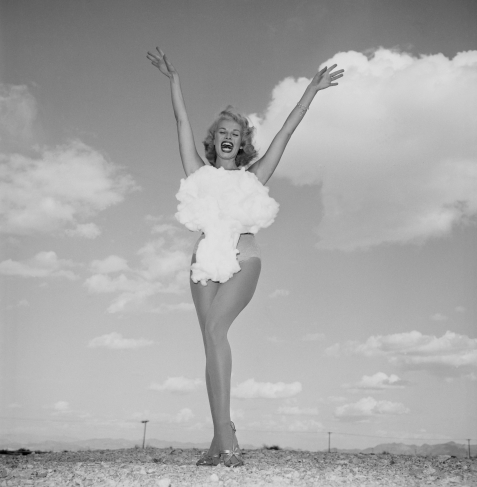
Operation name: Crossroads. Test name: Baker. Date and time: July 25, 1946, 08:35. Test location: Bikini Atoll, Pacific Ocean. Explosion type: underwater bomb. Explosive placement depth: 27.5 m. Yield: 21 kilotons. Photograph taken from aboard an unmanned aircraft flying over the epicentre of the explosion.
Operation name: Greenhouse. Test name: Dog. Date and time: April 8, 1951, 06:33. Location: Eniwetok Atoll, Pacific Ocean. Yield: 81 kilotons. VIP audience, illuminated by the explosion flash, watch the nuclear test. Photo: unknown author. Source: National Archives and Records Administration, Washington, USA
Operation name: Tumbler-Snapper. Date and time: May 1, 1952, 08:30. Test location: Range in Nevada. Explosion type, explosive placement: aerial, airdrop. Explosion height: 316 m. Yield: 19 kilotons. Marine infantry Pot and Wilson, ‘supporting’ the atomic mushroom during the Desert Rock IV exercise. Photo: unknown author. Source: National Archives and Records. Administration, Washington
Operation name: Plumbbob. Date and time: August 7, 1957, 04:25. Test location: Range in Nevada. Explosion type, explosive placement: aerial, balloon. Explosion height: 450 m. Yield: 19 kilotons. The ZSG-3 airship, downed by the shock wave from the explosion. Photograph taken from a distance of 8km from the test site. Photo: unknown author. Source: National Archives and Records. Administration, Washington
Operation name: Tumbler-Snapper. Test name: Charlie. Date and time: April 22, 1952, 09:30. Test location: Range in Nevada. Explosion type, explosive placement: aerial, airdrop. Explosion height: 1050 m. Yield: 31 kilotons. Rural schoolchildren practicing the duck and cover protection method with a real atomic bomb explosion in the background. (Duck and Cover was American educational and propaganda film about civil defence, filmed in 1952 by the US Government). The photo was taken in Indian Springs, Nevada, located 40 km from the epicentre. Photo: John Flory. Source: Frank Zodl/ThePhotoArchive.
Operation name: Crossroads. Date and time: July 25, 1946, 08:35. Test location: Bikini Atoll, Pacific Ocean. Explosion type: underwater bomb. Yield: 21 kilotons. As a result of the blast about two million tons of seawater was raised into the air, which resulted in various atmospheric phenomena, such as fog and rain, with high levels of radiation. Photo: unknown author. Source: Los Alamos National Laboratory, Los Alamos, USA
‘Miss Atomic Bomb’ Lee Merlin. Las Vegas, May 24, 1957. The picture was widespread and repeatedly published in the media. Lee Merlin was the last ‘Miss Atomic Bomb’ the beauty contest for this title was discontinued after 1957. Photo: Don English. Source: Las Vegas News Bureau.
Moscow, 12.04.2018—27.05.2018
exhibition is over
Central exhibition hall Manege
1, Manege Square (
www.moscowmanege.ru
Share with friends
| Tweet |
Curator: Alexander Mikhalchenko


